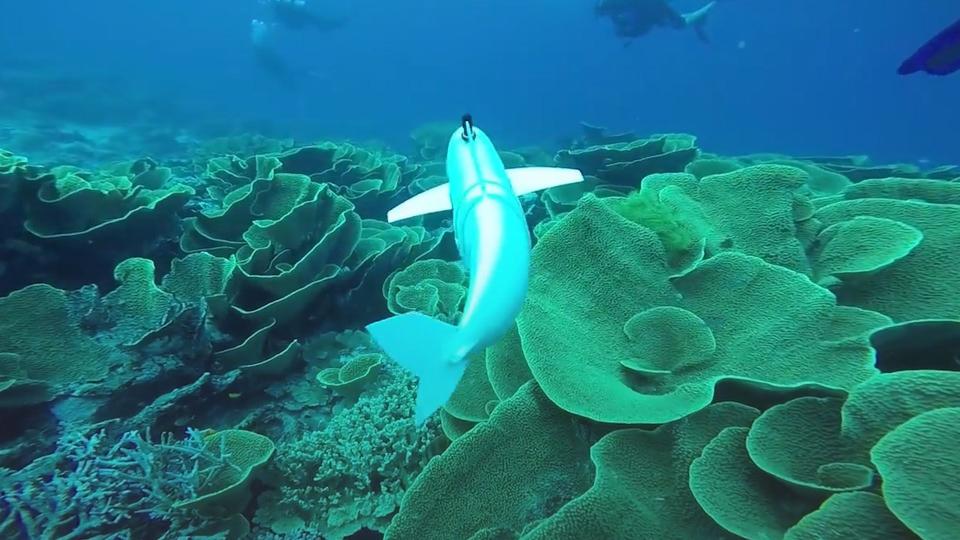Hey, how about we helicopter grizzly bears into this remote National Park?

Ancient groves of Douglas fir trees still stand in North Cascades National Park. The little-visited park — it receives less than one percent of the annual visitation of Yellowstone — can resemble the misty, prehistoric woods before the Pacific Northwest was settled. Wolverines, cougars, moose, and hundreds of other species of animals dwell here, living among ponds and beneath towering, pinnacled mountains.
But although these woodlands in Washington State were also once rich in grizzly bears, the park hasn't confirmed spotting any in years. After being thoroughly hunted, there may be none left.
"Without help, that population will not recover on its own," Frank van Manen, head of the Interagency Grizzly Bear Study Team and an ecologist at the U.S. Geological Survey (USGS), said in an interview.
SEE ALSO: Crumbling national parks mired in $11 billion backlog, but experts scoff at jacking up fees
The nation's top wildlife managers have been planning to recover grizzly bears in North Cascades since 1991. The process, though, is intensely bureaucratic, requiring years of evaluations, re-evaluations, and proposals (some of which are hundreds of pages long).
Now, though, after more than 20 years of research, it might actually happen.
The recovery plan recently gained a powerful supporter: Interior Secretary Ryan Zinke traveled to the verdant park on March 23 to announce the restarting of recovery planning.
"The loss of the grizzly bear in the North Cascades would disturb the ecosystem and rob the region of an icon," said Zinke.
Grizzly reintroduction planning abruptly halted in December 2017, with no clear explanation why.
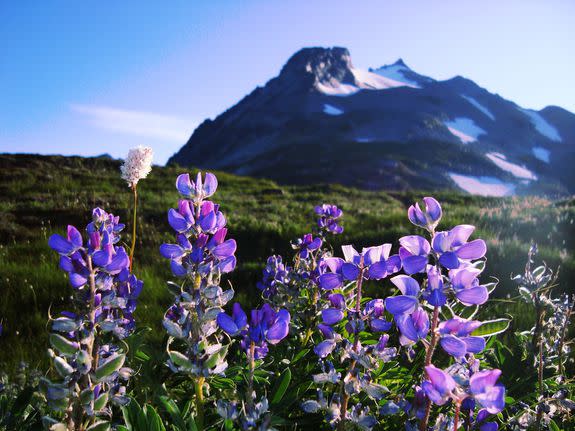
Image: National Park Service/O'Casey
Zinke's enthusiasm for recovering grizzlies took many people — both those who support and oppose federal conservation efforts — by surprise.
Last year, Zinke made the controversial recommendation to President Donald Trump that Bears Ears National Monument in Utah be dramatically reduced in size. Trump then proceeded to slash the size of this fossil-rich land, previously protected by former President Barack Obama, by over one million acres (an over 80 percent reduction).
But Zinke maintained that grizzly bear recovery is part of "continuing our commitment to conservation."
He may have been swayed by the expanse and wildness of the North Cascades region. There aren't many places left to recovery grizzly bears, and North Cascades is as good as it gets. The park is surrounded by national forests on three sides and several Canadian territorial parks adjoin the park to the north.
"It’s a tremendously wild area," Chris Servheen, the former Grizzly Bear Recovery Coordinator for the U.S. Fish and Wildlife Service, said in an interview. "There’s a tremendous amount of grizzly bear habitat."
Recovering grizzly bears in the North Cascades means transporting bears from British Columbia into the park. According to the park's plans, the bears will be helicoptered in, as that's the only way to access extremely remote areas in a mostly roadless place.
There are four different options on the table right now, detailed in the park's Environmental Impact Statement (EIS). One option, which Zinke apparently opposes, is doing nothing. If so, the remaining few bears will die out. The other three options propose restoring grizzly bear populations to approximately 200 individuals during the next 25, 60, or 100 years.
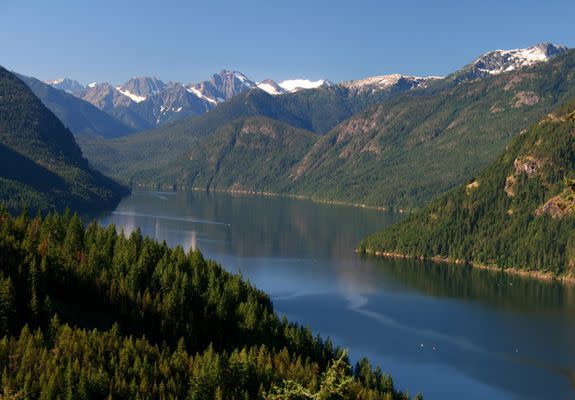
Image: Andy Porter/National Park Service
Helicoptering sedated bears to their homes in the deep backwoods of North Cascades, then, isn't just a logistical challenge. It requires a long-term commitment from wilderness managers from multiple agencies. It's also pricey.
"A well-funded project that has a broad base of public and political support can do the job," Stephen Herrero, professor emeritus in animal behavior and ecology at the University of Calgary, said in an interview.
"It ain't easy — but it sure is possible," he said.
A shining example of where successful bear recovery has occurred is in Yellowstone National Park. In 1975, the U.S. Fish and Wildlife Service listed the population of 136 bears there as endangered, but the population has since grown to around 700 bears today. These bears were taken off the endangered species list last year.
North Cascades, with few bears left (perhaps none), may have a significantly more difficult hill to climb. Fortunately, decades of successful — and at times unsuccessful — bear management in Yellowstone show how it can be done.
"We have the tools in our toolbox to recover grizzlies in the North Cascades," said Severheen. "We know how to do that."
A critical factor, learned from Yellowstone, is keeping grizzly mothers alive.
"Ultimately, grizzly bear populations thrive or decline depending on the survival of adult females," said van Manen.
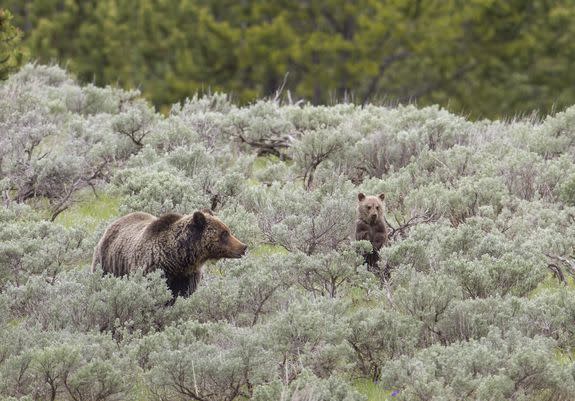
Image: National Park service
Even into the early 1980s in Yellowstone, grizzly bear populations were declining. "There were too many adult females dying," said van Manen. This was occurring in large part because bears were getting into garbage dumps, and they became habituated to humans, which then created conflicts with people. Many of these bears had to be killed.
But park managers solved these problems, and many others, including by encouraging cattle ranchers with allotments next to the park to voluntarily give up this leased land.
Although North Cascades and the surrounding forests provide a massive expanse of territory to reintroduce bears, some aren't pleased with the government's bear recovery plans.
The local Board of Skagit County Commissioners, have repeatedly opposed the grizzly introduction, citing public safety concerns. A spokesperson for the commissioners said none were available for comment.
Some ranchers are also concerned about grizzly bears in the area — and not just because bears that roam outside the park might eat some cattle.
"Reintroducing as many as 200 man-eating predators into an area already reeling from exploding gray wolf populations is anything but neighborly," Ethan Lane, the National Cattleman's Beef Association federal lands executive director, said in a statement.
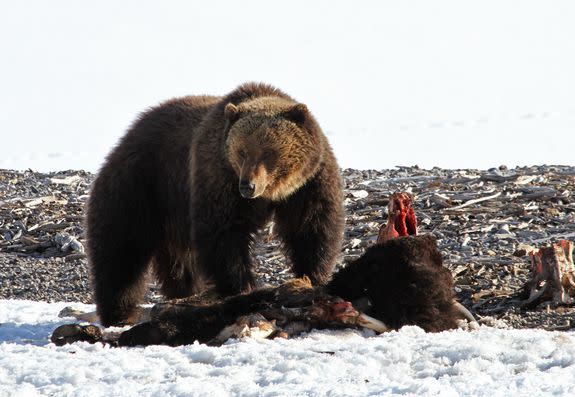
Image: National Park SErvice
Coming across a grizzly in the vast North Cascades wilderness, however, is unlikely. This is especially the case during the first decade, when 10 or 15 bears might be wandering the woods.
"We’re talking thousands of square miles of country," said Severheen. "People won’t even know they’re in there."
Additionally, bears "are the ultimate omnivores," said van Manen. They eat almost anything in the wild: Fish, berries, grass — but humans are not part of a bear's diet.
Nor do bears seek out people (unless they've been attracted to something like a food dump).
"Anybody that spends much time in grizzly bear country recognizes that there is a pretty low probability of having an interaction with bears," said Severheen.
The Interior Department says that the final EIS draft will be released in late summer 2018. It will consider 126,000 public comments. From there, the Park Service and its management partners will pick one of the recovery options.
Recovering a fallen icon of the American West is bold, expensive, and will inevitably have its opponents. But national parks are required to conserve these places as they naturally exist, and grizzly bears are an integral part of this environment.
"There should be recovery in the North Cascades," said Severheen.
WATCH: MIT created this imposter robot fish to spy on sea creatures
